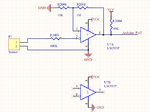Follow along with the video below to see how to install our site as a web app on your home screen.
Note: This feature may not be available in some browsers.
I found this sensor from old collection(not mine). As far as I remember it is used for RPM count. But what kind of censor is this ? capacitive proximity sensor or inductive ? And how this work, I mean how can I use it for RPM count with an ardiuno ? It has 2 wire connection from backside.
Thank you
View attachment 116613
There is slight problem with that, the wheel is complete metal with metal teeth. Wont there be a problem if its inductive sensor ?
Something like this https://www.vems.hu/manual/html/images/InstallingTriggerwheel.png made of complete metalWhat do you mean by that?
but will it work with something like that ? and how should I use it ?
I mean, how do I know how much voltage it require ? Can I use 5V as it will be easier read from arduino. And how do I wire this sensor, there has to be common ground ?
Thank you
Hi,
Generally passive magnetic type inductive speed pickups are used with some signal conditioning (usually comparator type op-amp) and wired to
a digital input as the information you want is the time lapse between pickup pulses which is RPM. The voltage is depends on the sensor. If the voltage is exceed 5V, for sure you can use a relay to make it work. If you can find the datasheet of this component, it will help you to design your circuit.

